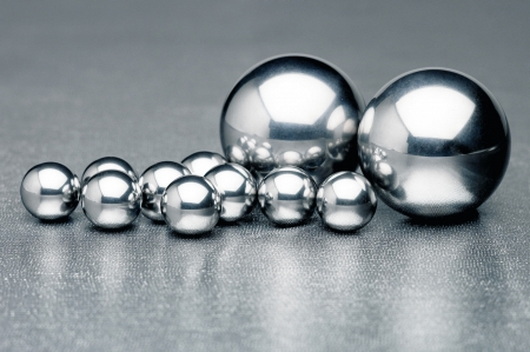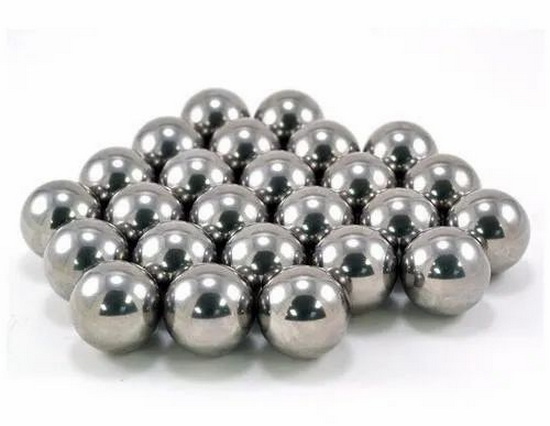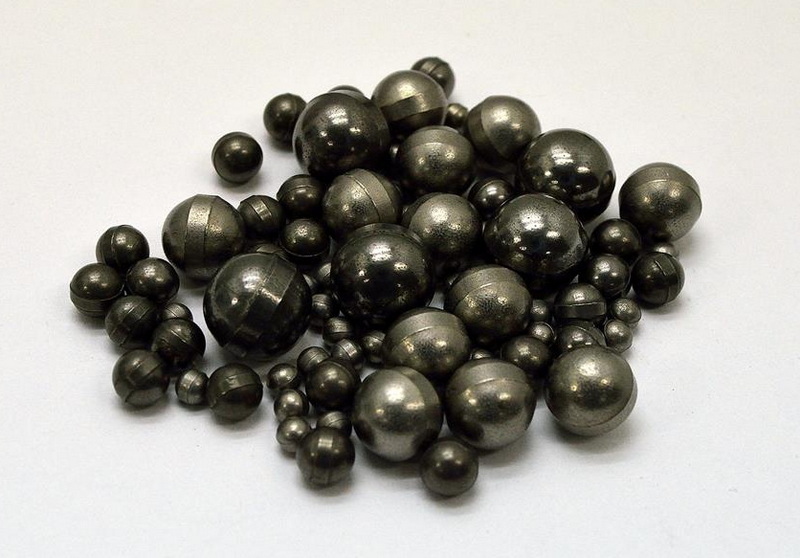Content Menu
● The Composition of Tungsten Carbide
● The Manufacturing Process
>> 1. Powder Preparation
>> 2. Mixing and Granulation
>> 3. Pressing
>> 4. Sintering
>> 5. Finishing
● Properties of Tungsten Carbide Balls
>> Hardness
>> Wear Resistance
>> Corrosion Resistance
>> Thermal Stability
● Applications of Tungsten Carbide Balls
● Conclusion
● Related Questions
>> 1. What are the typical costs associated with manufacturing tungsten carbide balls?
>> 2. How does the manufacturing process of tungsten carbide balls compare to other ball bearing materials?
>> 3. What are the potential environmental impacts of tungsten carbide ball production?
>> 4. Can tungsten carbide balls be recycled?
>> 5. What industries benefit the most from tungsten carbide balls?
Tungsten carbide balls are renowned for their exceptional hardness and durability, making them a preferred choice in various industrial applications. Understanding the manufacturing process and the properties that contribute to their hardness is essential for anyone interested in materials science or engineering. This article delves into the intricate process of manufacturing tungsten carbide balls and explores the unique characteristics that make them so hard.

The Composition of Tungsten Carbide
Tungsten carbide (WC) is a chemical compound composed of equal parts tungsten and carbon atoms. In its raw form, tungsten carbide appears as a fine gray powder. However, through a process called sintering, this powder can be transformed into solid shapes suitable for various applications. The hardness of tungsten carbide is primarily due to its unique microstructure, which consists of tungsten carbide grains embedded in a cobalt matrix. This combination results in a material that is not only hard but also tough and resistant to wear.
The Manufacturing Process
The manufacturing of tungsten carbide balls involves several key steps:
1. Powder Preparation
The first step in the manufacturing process is the preparation of tungsten carbide powder. Tungsten metal is combined with carbon in a controlled environment, typically at temperatures ranging from 1400°C to 2000°C. This high-temperature reaction results in the formation of tungsten carbide. The quality of the powder is crucial, as it directly affects the final properties of the balls.
2. Mixing and Granulation
Once the tungsten carbide powder is produced, it is mixed with a binder material, usually cobalt. This mixture is then granulated to ensure uniformity in particle size. The granulation process helps in achieving a consistent density throughout the material, which is essential for the subsequent pressing stage.
3. Pressing
The granulated powder is then subjected to high pressure in a die to form the desired shape of the balls. This process is known as cold isostatic pressing (CIP). The pressure applied during this stage can reach up to 30,000 psi, ensuring that the powder particles are tightly compacted.
4. Sintering
After pressing, the green balls (unfired) are sintered in a furnace at high temperatures. This process removes the binder and allows the tungsten carbide particles to bond together, resulting in a solid, dense material. The sintering temperature and time are critical factors that influence the final hardness and microstructure of the tungsten carbide balls.
5. Finishing
Once sintering is complete, the balls undergo various finishing processes, including grinding and polishing. These processes enhance the surface finish and dimensional accuracy of the balls, making them suitable for precision applications. The final product is then inspected for quality assurance, ensuring that it meets the required specifications.

Properties of Tungsten Carbide Balls
Tungsten carbide balls possess several remarkable properties that contribute to their widespread use in various industries:
Hardness
One of the most notable characteristics of tungsten carbide is its hardness. It ranks around 9 on the Mohs scale, making it one of the hardest materials available. This exceptional hardness allows tungsten carbide balls to withstand significant wear and tear, making them ideal for applications in harsh environments.
Wear Resistance
Tungsten carbide's wear resistance is another critical property. The material can endure abrasive conditions without significant degradation, which is why it is commonly used in applications such as ball bearings, cutting tools, and mining equipment.
Corrosion Resistance
Tungsten carbide also exhibits excellent corrosion resistance, particularly when coated with materials like titanium nitride. This property is essential for applications in industries such as oil and gas, where exposure to corrosive substances is common.
Thermal Stability
The thermal stability of tungsten carbide allows it to maintain its properties even at elevated temperatures. This characteristic is particularly beneficial in applications involving high-speed operations or extreme thermal conditions.
Applications of Tungsten Carbide Balls
Tungsten carbide balls are utilized in a wide range of applications across various industries:
- Ball Bearings: Due to their hardness and wear resistance, tungsten carbide balls are commonly used in ball bearings, providing smooth operation and longevity.
- Cutting Tools: The exceptional hardness of tungsten carbide makes it an ideal material for cutting tools, enabling them to maintain sharpness and precision over extended use.
- Mining and Drilling: Tungsten carbide balls are used in mining and drilling applications, where they can withstand the harsh conditions and abrasive materials encountered.
- Flow Meters: In flow measurement applications, tungsten carbide balls provide accurate readings due to their consistent size and shape.
- Detent Mechanisms: The durability of tungsten carbide balls makes them suitable for detent mechanisms in various machinery, ensuring reliable performance.
Conclusion
The manufacturing of tungsten carbide balls is a complex process that involves careful preparation, pressing, sintering, and finishing. The unique properties of tungsten carbide, including its hardness, wear resistance, and thermal stability, make it an invaluable material in numerous industrial applications. As technology advances, the demand for tungsten carbide balls is likely to grow, further solidifying their role in modern engineering and manufacturing.

Related Questions
1. What are the typical costs associated with manufacturing tungsten carbide balls?
The costs can vary significantly based on factors such as size, quality, and production volume. Generally, tungsten carbide balls are more expensive than those made from other materials due to the complexity of the manufacturing process and the cost of raw materials.
2. How does the manufacturing process of tungsten carbide balls compare to other ball bearing materials?
Tungsten carbide balls are manufactured through a more complex process involving high temperatures and pressures compared to traditional steel balls. This results in superior hardness and wear resistance, making tungsten carbide a preferred choice for high-performance applications.
3. What are the potential environmental impacts of tungsten carbide ball production?
The production of tungsten carbide can have environmental impacts, particularly related to mining and processing tungsten. Efforts are being made to improve sustainability in the industry, including recycling and reducing waste during manufacturing.
4. Can tungsten carbide balls be recycled?
Yes, tungsten carbide balls can be recycled. The recycling process involves grinding the used material and reprocessing it to create new tungsten carbide products, which helps reduce waste and conserve resources.
5. What industries benefit the most from tungsten carbide balls?
Industries such as aerospace, automotive, oil and gas, and manufacturing benefit significantly from tungsten carbide balls due to their durability and performance in demanding applications.
















